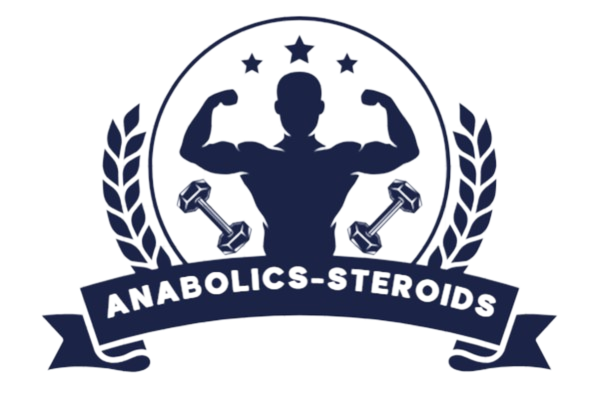For all you Gen-Xers, do you remember the good old days of feeling young and invincible no matter the damage you did to your bodies the night before? Do you recall those all-nighters of partying and drinking, getting an hour or two of sleep, and still waking up fresh enough to hit the gym? All distant memories for most of us from that generation.
If you were around for the original Miami Vice and Magnum PI series (not the lame reboots) or tuned in to the first glimpses of Duran Duran dominating MTV, you probably realize now, decades later, that time eventually catches up with you, especially when it comes to taking care of your body.
Heck, even the first Fast and Furious movie is now 23 years old. And sort of like an aging Dom Toretta, our indestructible youth inevitably fades in the rearview mirror. Today, we need to redefine how we live and move as we get older, so that we can retain as much of our youthful resilience and movement as possible.
And if you haven’t yet said good-bye to the old care-free version of yourself, here are five tips in and outside of the gym that you can implement immediately in order to stay feeling young for the rest of your life.
5 Fitness Goals For Older Lifters To Stay Lifting
Maintain Muscle Mass and Bone Density
We may begin to lose muscle mass as early as age 30 and may lose up to 3-5% of our muscle per decade. This muscle loss accelerates after 65. We may also begin to lose bone mineral density around 30. This is especially important for post menopausal women as changes to their estrogen can lead to accelerated bone loss.
We need to build as much muscle and bone density reserve proactively, and train to maintain it as we get older. Even with our best efforts we will lose muscle and bone over time. We don’t see many jacked 80-year-olds, but we do see people who maintain active, independent life in their 80s and beyond. The more muscle we build and the more bone density we preserve, the more runway we have to gradually lose muscle and bone yet remain strong and healthy.
This means challenging resistance training to near failure. Resistance training doubles as a critical means of maintaining motor skills as we age. If we maintain muscle mass, bone density, strength, and motor skills we not only reduce the risk of lifestyle diseases, we increase the likelihood of remaining independent as we get older. A significant amount of disability among older adults can be traced to a life of inactivity where muscle, movement, and bone reserves deplete earlier as we age. These people often lack the strength and resilience to live independently.
For bone density, resistance training may not be enough. We may also need some impact. We’ve been trained to think of impact as dangerous as we age, but the poison is in the dose. Landing from jumping off the a second story balcony probably breaks your legs, but some hopping and jumping at volume and intensity relative to your current ability may provide a stimulus for bone to strengthen. Even something as innocuous as rucking with a weighted pack may improve bone mineral density, though current research hasn’t provided strong evidence to back this theory.
Protein intake matters too. As we age our ability to absorb protein decreases, necessitating more dietary protein. Aiming for the minimum recommended daily intake isn’t enough. It may we wise to aim for upwards of 1 gram per pound of lean body mass. Higher protein intake helps maintain muscle mass and bone mineral density, and may help reduce the risk of fractures as we age.
According to Robert Linkul, an NSCA Personal Trainer of the Year award-winning coach who specializes in training older adults, “Sarcopenia is the loss of muscle mass and function. The weaker your muscles are the less function you have. The less function you have, the higher mortality risk you have.”
Maintain Power and Explosiveness
We lose muscle as we age. We lose speed, power, and explosiveness faster. We worry that it’s unsafe for older adults to do expositive things, but it’s dangerous not to.
According to Linkul, “The type of muscle that atrophies first as we age is the type 2 power producing fibers. The weaker these muscle fibers get, the more likely we are to fall.”
Maintaining power and explosiveness has many dimensions. These qualities help with:
- Reduced chance of falling.
- Increased chance of catching or bracing yourself in the event of a fall.
- Retaining the ability to participate in favorite sports and activities (I think of my grandmother who played tennis into her seventies)
- Improved ability to function in emergency or even life and death situations, including to defend yourself.
Training power and explosiveness doesn’t necessarily mean you need to learn to Olympic lift or perform high box jumps, but can include:
- Throwing and slamming medicine balls.
- Kettlebell swings, cleans, and other explosive motions.
- Sprinting with a sled.
- Swinging a sledgehammer against a tire.
- Jumping and skipping.
- Performing regular strength training lifts explosively where safe.
Find ways to express speed, explosiveness, and power within your current ability, and challenge yourself at the edges of that ability.
Maintain Metabolic Health
Life offers no guarantees. Many diseases have genetic components, but even with genetic risk factors, our lifestyle behavior is an enormous magnifier or mitigator of risk.
Strength training and cardio are proven tools for maintaining normal blood pressure and blood sugar, two of the major risk factors for cardiovascular disease and diabetes. There is even a growing belief among some medical professionals the neurodegenerative disease Alzheimer’s has a metabolic component, with some now referring to it as type 3 diabetes. Outside of Alzheimer’s risk, strength and cardiovascular training also have potent positive effects on our cognitive health as we age.
To sustain your metabolic health and reduce long term risk, focus on maintenance of a healthy body weight (obesity is a significant risk factor for long term metabolic disease), while strength training and doing cardio. Two to three hours of strength training per week and 120 to 150 minutes of low to moderate intensity cardio per week can reduce your risk.

Maintain Social Ties
Remember when experts believed that mild social drinking had health benefits? Research explored resveratrol in red wine as a possible booster of heart health. It turned out to be a dead end. We now know that no amount of alcohol is healthy for us, though heavy drinking significantly escalates negative health outcomes.
So why did the data suggest benefits? We mistook the cause. The positive health benefits of social interaction, especially as we get older, outweigh the negative health effects of some drinking.
Even much of the blue zone longevity discussion probably has more to do with social connection. The significant takeaway is the power of maintaining a rich social life.
Gym diehards can lose sight of this critical part of healthy aging. If we only exist by pulling a hoodie over our eyes and isolating ourselves, we can lose out on one of the richest parts of the gym experience. So take the headphones out every once in a while, even if you have to listen to an insufferable commercial gym setlist.
At the same time, listen to the advice from icons like Dorian Yates and Arnold Schwarzenegger, who talk about the community and camaraderie among lifers in the golden era of bodybuilding. Most of my closest friends in the world came from the gym floor.
Creating firm boundaries around time for family, friends, and social connection may be as important as firm boundaries for fitness. This is especially important if you’re isolated in your home gym. Few blue zone centenarians spent their lives in the gym.
Manage Fall Injury Risk
You can have perfect metabolic health as you age and be taken out in a bad fall. About 15-30% of older adults die within one year of a serious fall injury like a broken femur or pelvis. A serious fall injury can rob you of your independence and mobility. Losing your ability to get out in the world can shutter your social life. Taking away your social life can crush your mental health and accelerate cognitive decline. It’s not uncommon to see neurodegenerative disease develop after a serious fall injury.
Loss of independence and mobility can remove your metabolic health promoting activities and accelerate downstream health risks.
Maintaining bone mineral density is a critical focus here, but isn’t enough. We want to maintain the strength and coordination to lessen the chance of a fall and improve the chance of catching yourself or bracing against the impact, in the event of a fall. And if you do fall, the more muscle and bone strength you have the less likely you’ll be injured. Even body fat may have a goldilocks relationship with injury risk, though research on this is inconclusive. Too little body fat and you may not have important cushioning against injury, while too much means you’re heavier and fall harder.
Surviving a fall unscathed is essential, but not the full story. You also need the strength to get back up again. There are countless horror stories of older adults who live alone and fallen but lacked the strength to get back up, whether or not they were injured. Some survived for days only suffer a painful and terrifying death.
Maintaining the strength and skill to get up and down from the ground, means training this ability. All too often we avoid having older adults get down to and up from the ground, when this is painfully backwards logic. Consider adding exercises on the ground like planks, deadbugs, crawls, and ground-based mobility drills. Even if these exercises aren’t by themselves challenging for pure strength, they force you to practice and retain the ability to get off the floor.
There will come a day where you realize you aren’t immortal. Aches accumulate and you aren’t as fast or mobile. Decline in muscle mass and movement quality is inevitable but the rate of decline isn’t. You possess great power to reduce the pace and your overall risk of age-related disease and disability. And while we can make progress at any age, starting as early as possible to build reserve against muscle, bone, and movement loss is one of the best ways to reduce your risk of losing your quality of life and independence as you get older.



